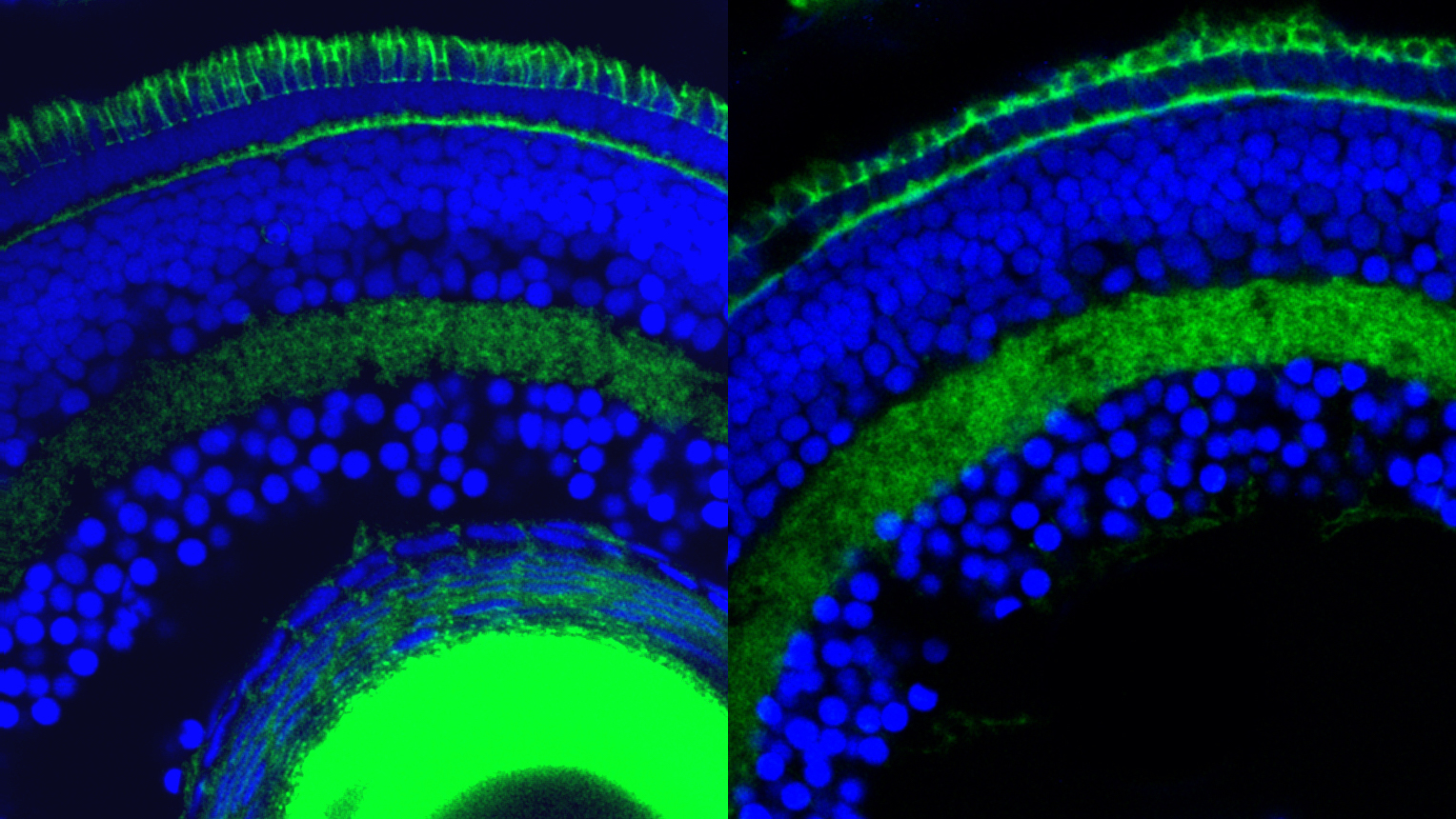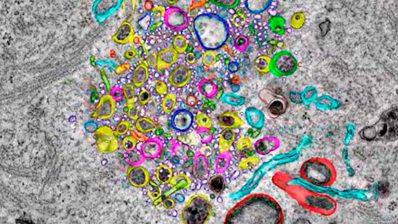Recently, the Center for Genomic Regulation (CRG) has participated in a study that has identified that the Srrm3 gene is vital for the correct development of retinal photoreceptor cells. In this image taken by Ludovica Ciampi, a PhD student at the CRG, cells of the zebrafish retina can be observed. The photoreceptor cells responsible for transforming light into neuronal signals that allow vision are stained in green. On the left we can see normal cells and, on the right, where a smaller amount of green is visible, there are retinal cells with the Srrm3 gene deactivated.
Given their function, retinal cells are one of the most complex and specialized cell types in our body. Photoreceptors are located at the back of the retina and are responsible for capturing and processing light and sending these signals to the brain to produce vision. Their high specialization and complexity is due to the regulation of a multitude of genes, and a small mutation in just one of them can lead to vision loss.
By genetically modifying zebrafish, the research team has observed that the elimination of the Srrm3 gene causes severe visual impairment in these animals. Specifically, they found that, in fish without Srrm3, alternative splicing of microexons was altered. Microexons are small DNA fragments and alternative splicing is a particularly important molecular mechanism in neuronal tissue that allows for several proteïns to be produced from one same DNA fragment.
Finding patients with retinal diseases who have mutations in this specific gene could lead us to possible new therapeutic strategies”
Ludovica Ciampi, CRG
Thus, researchers from the CRG, the Catalan Institution for Research and Advanced Studies (ICREA), the Teleton Institute of Genetics and Medicine of Naples and the University of Zurich, propose to continue studying the Srrm3 gene to evaluate whether it could be involved in hereditary retinal diseases such as retinitis pigmentosa, with the aim to find new therapeutic targets that would improve the vision of patients.
Specialization of the photoreceptor transcriptome by Srrm3-dependent microexons is required for outer segment maintenance and vision. Ciampi et al. (2022) Proceedings of the National Academy of Sciences July 12, 2022 119 (29) e2117090119. doi.org/10.1073/pnas.2117090119







